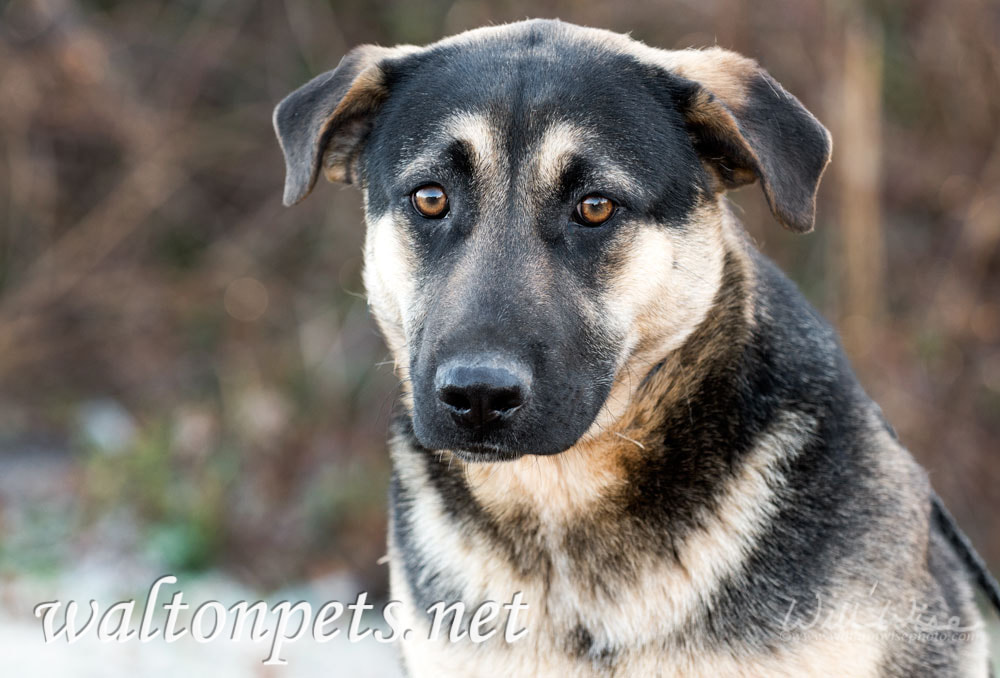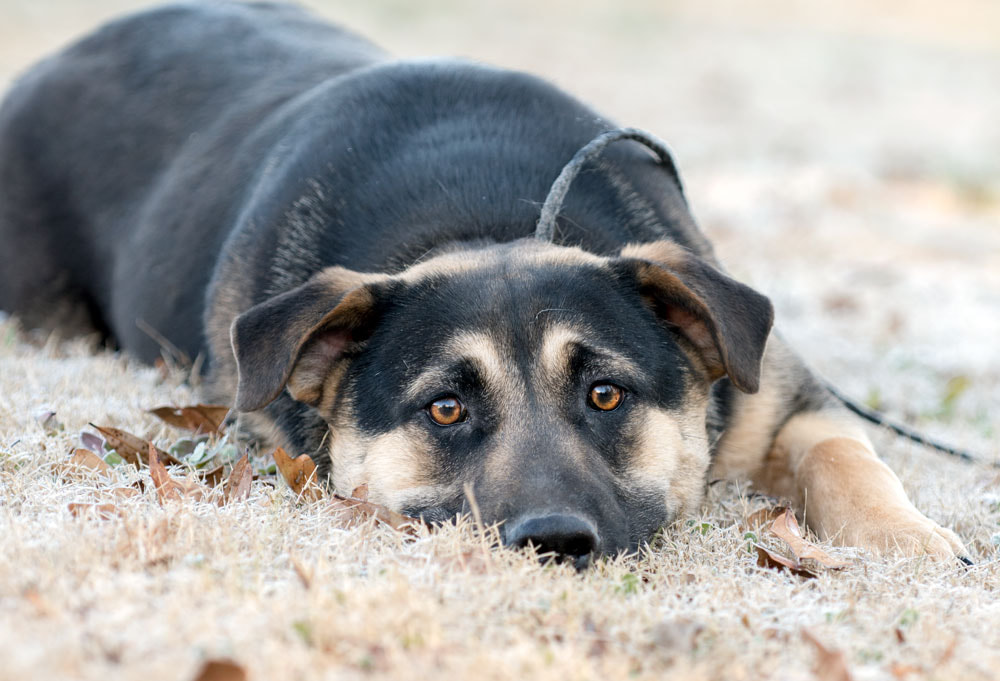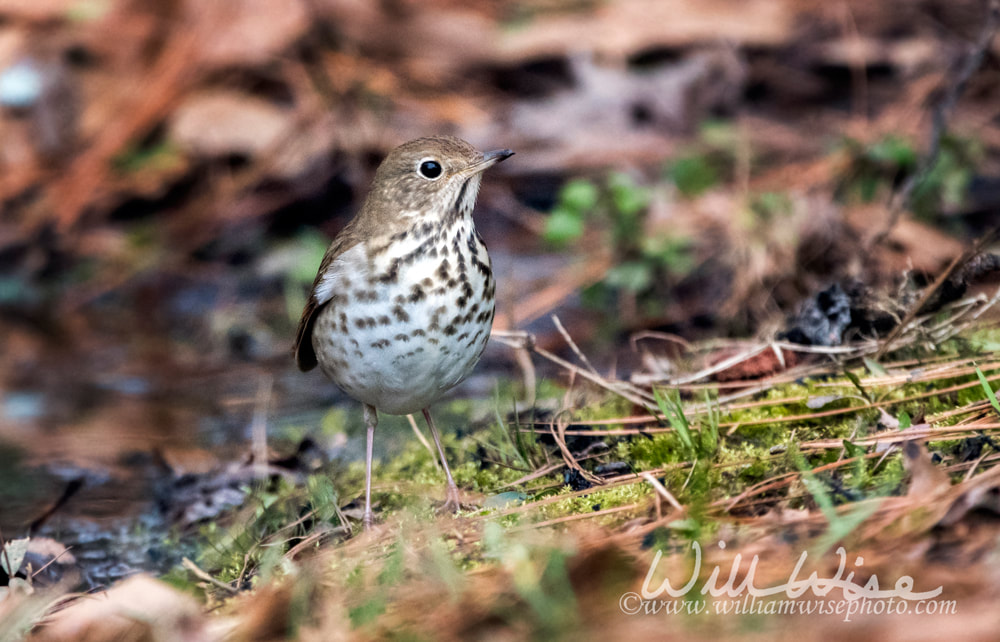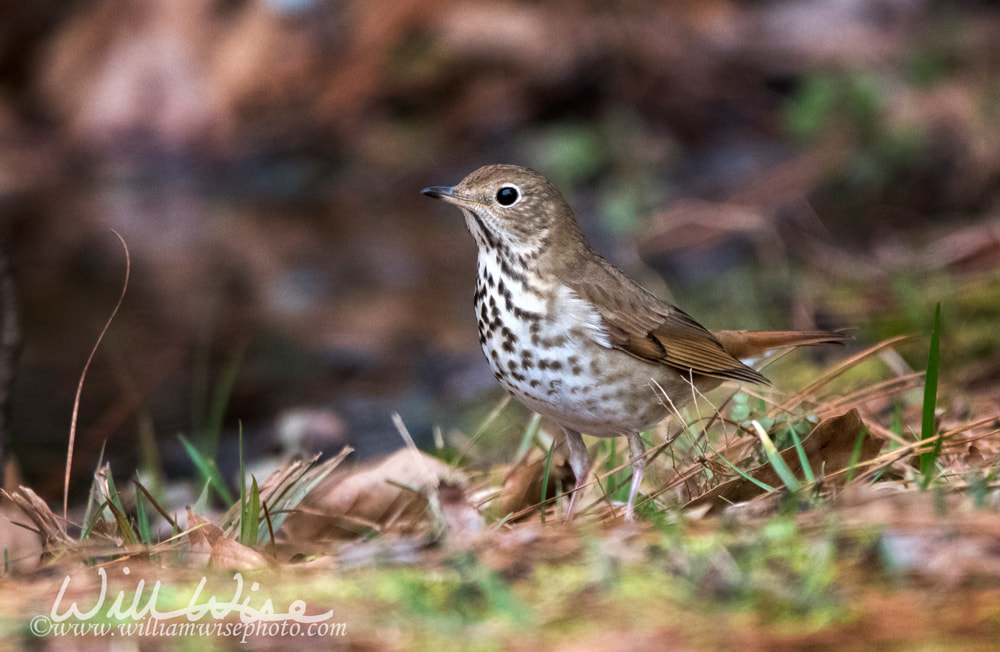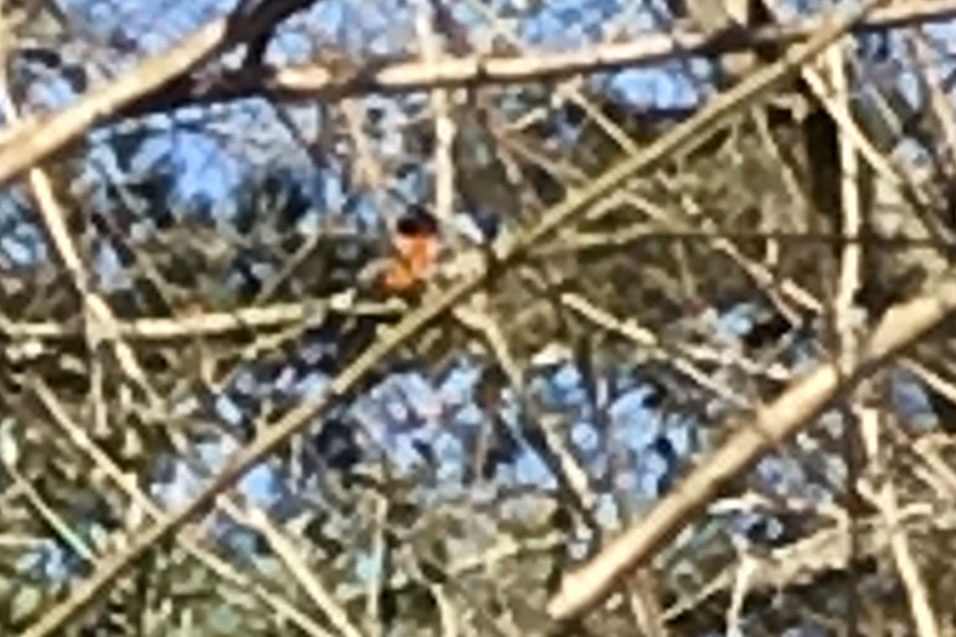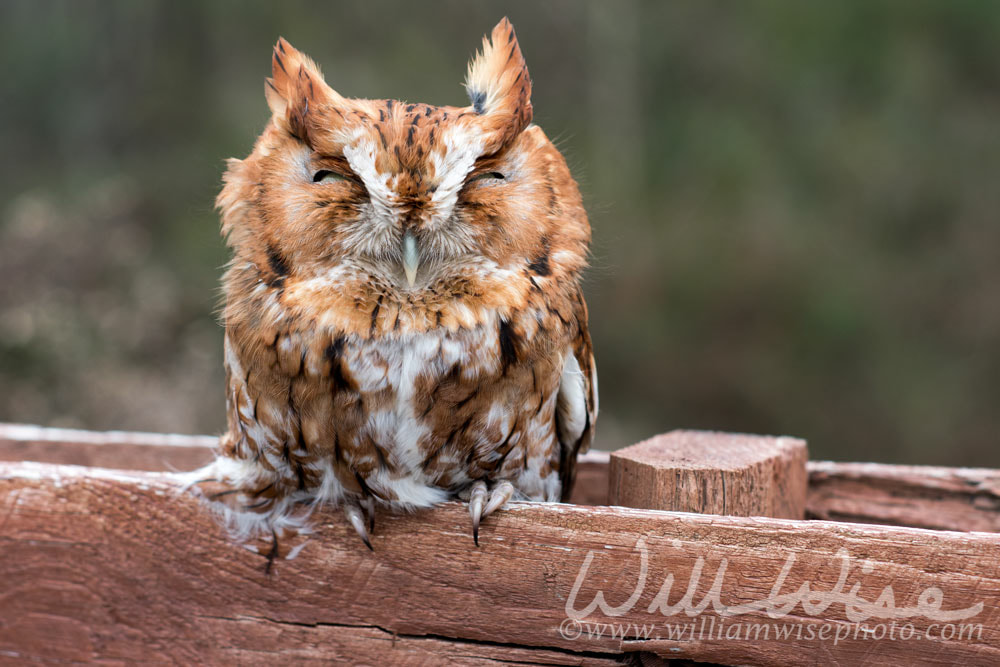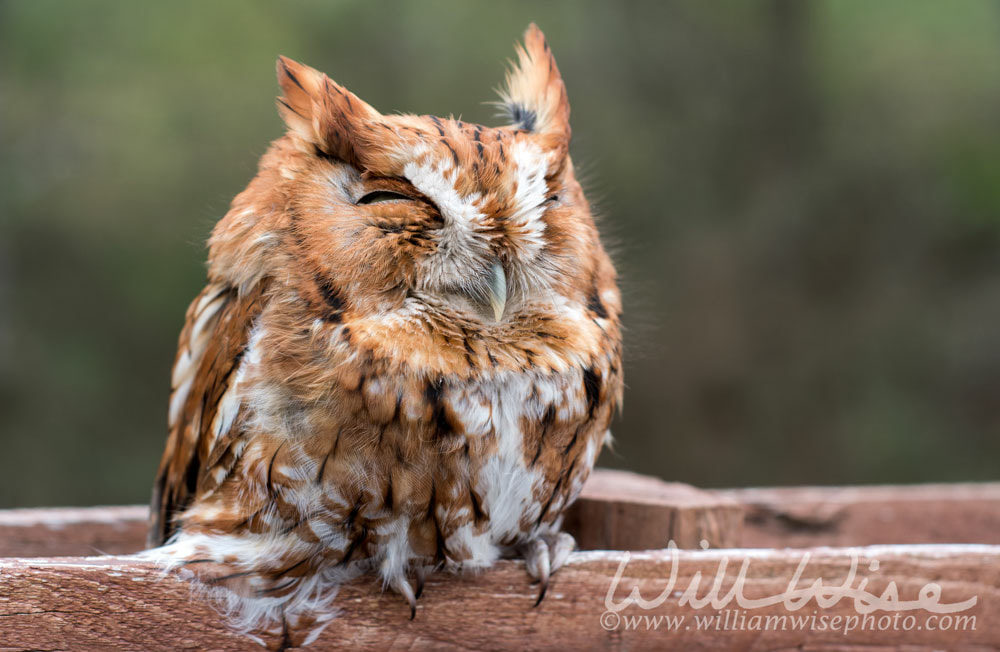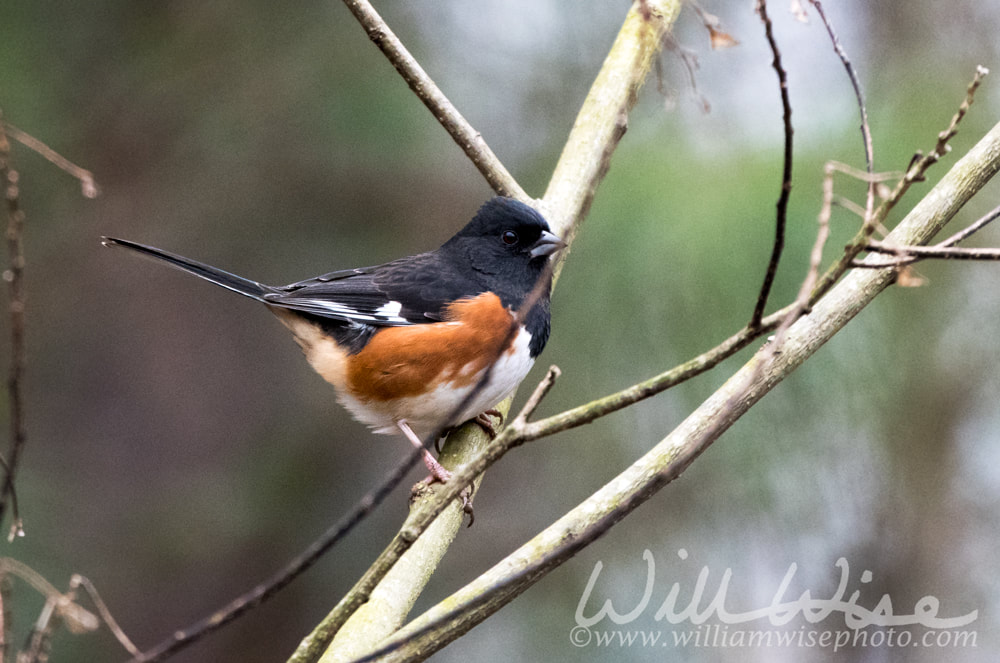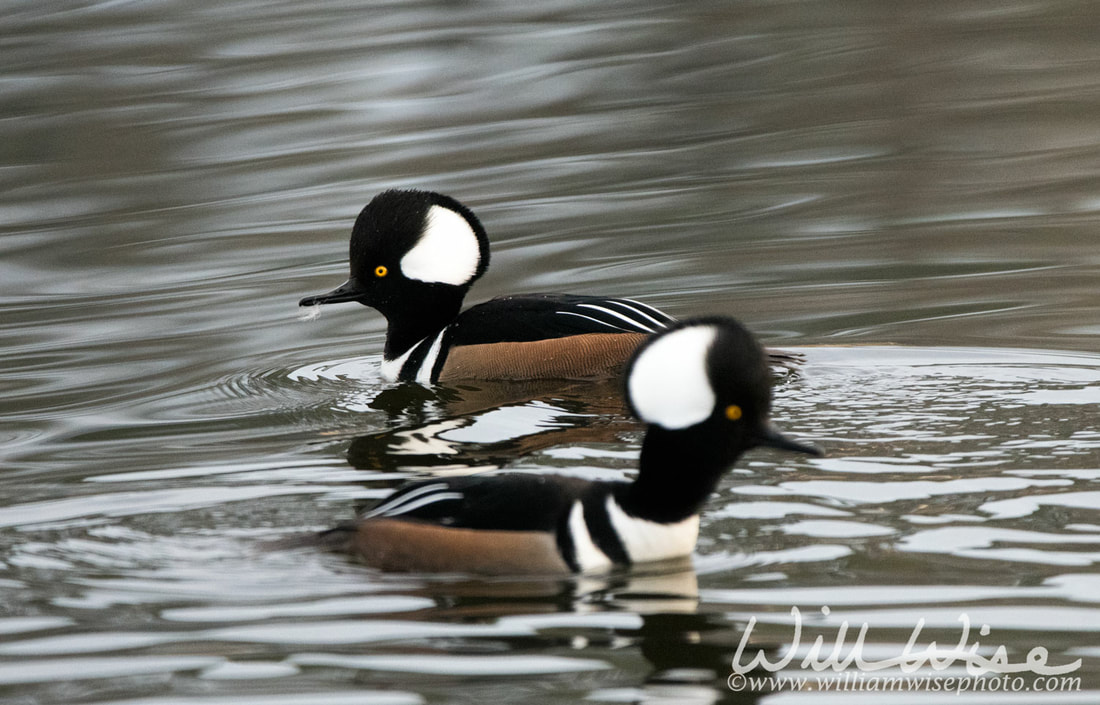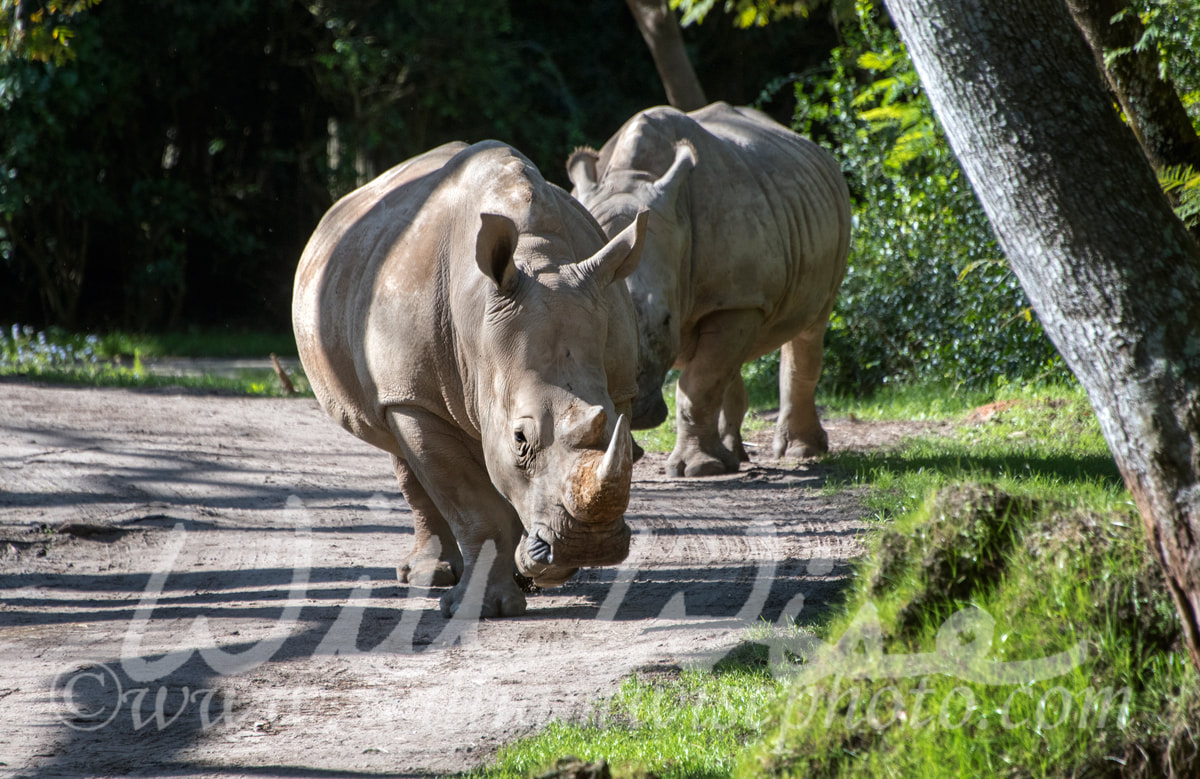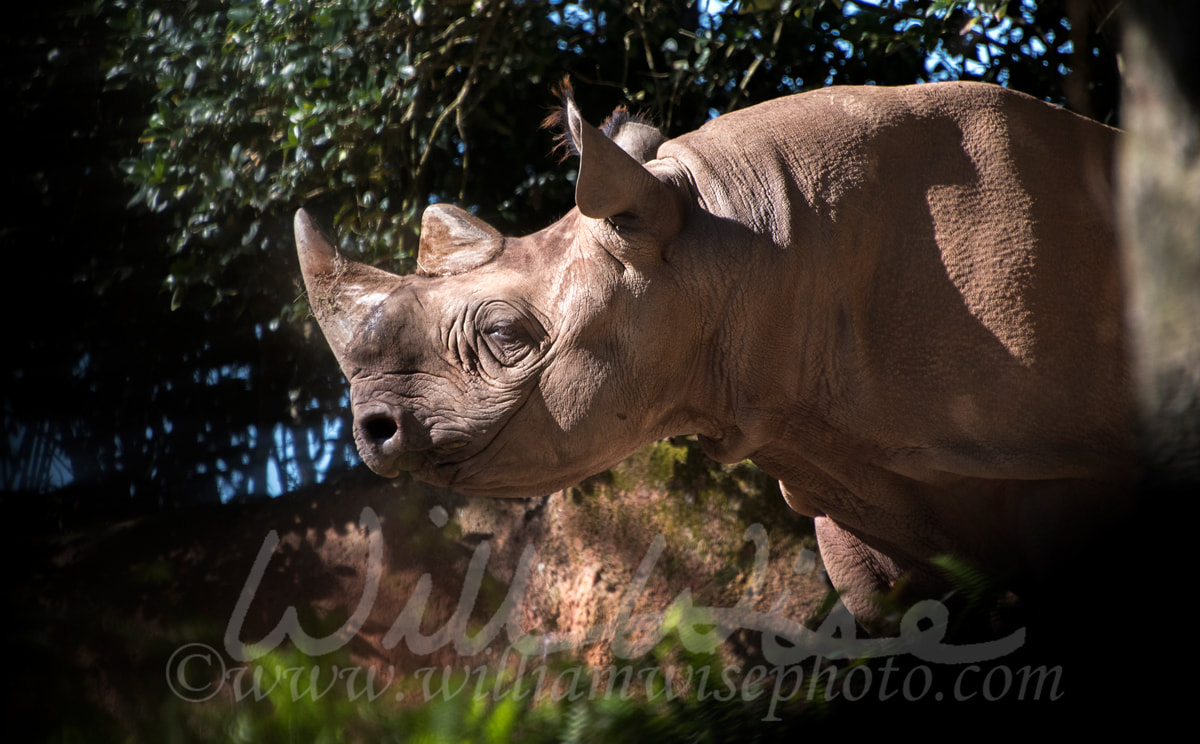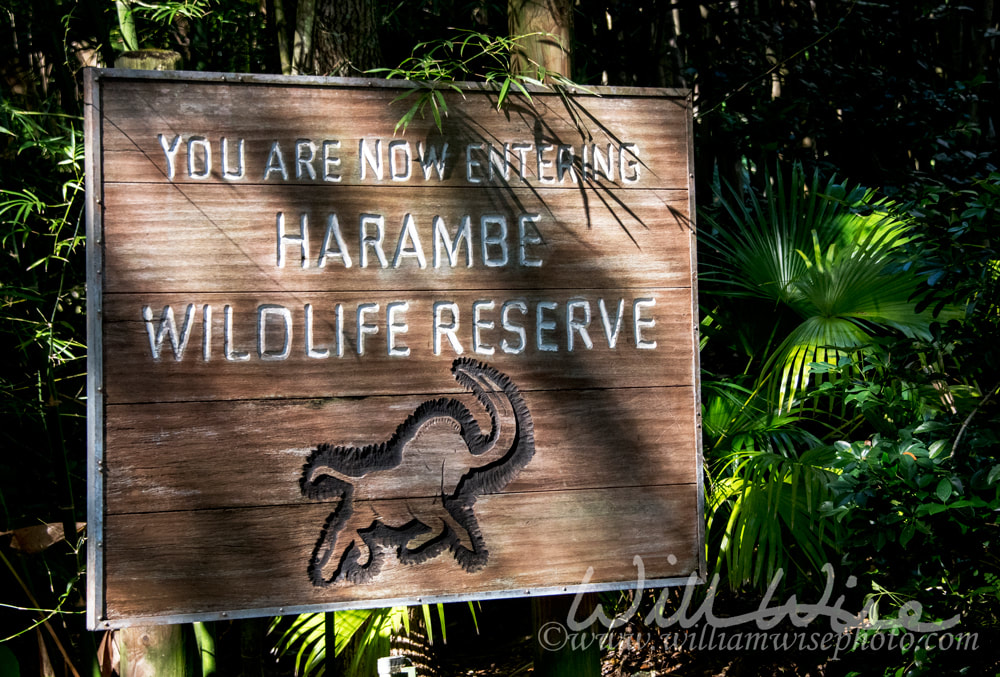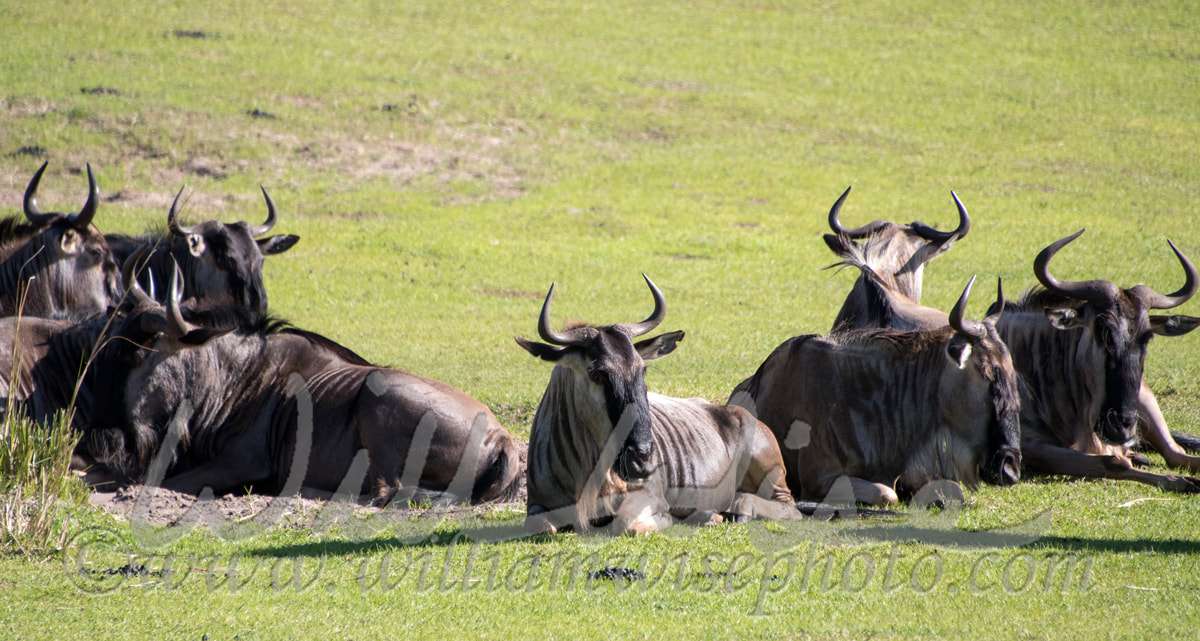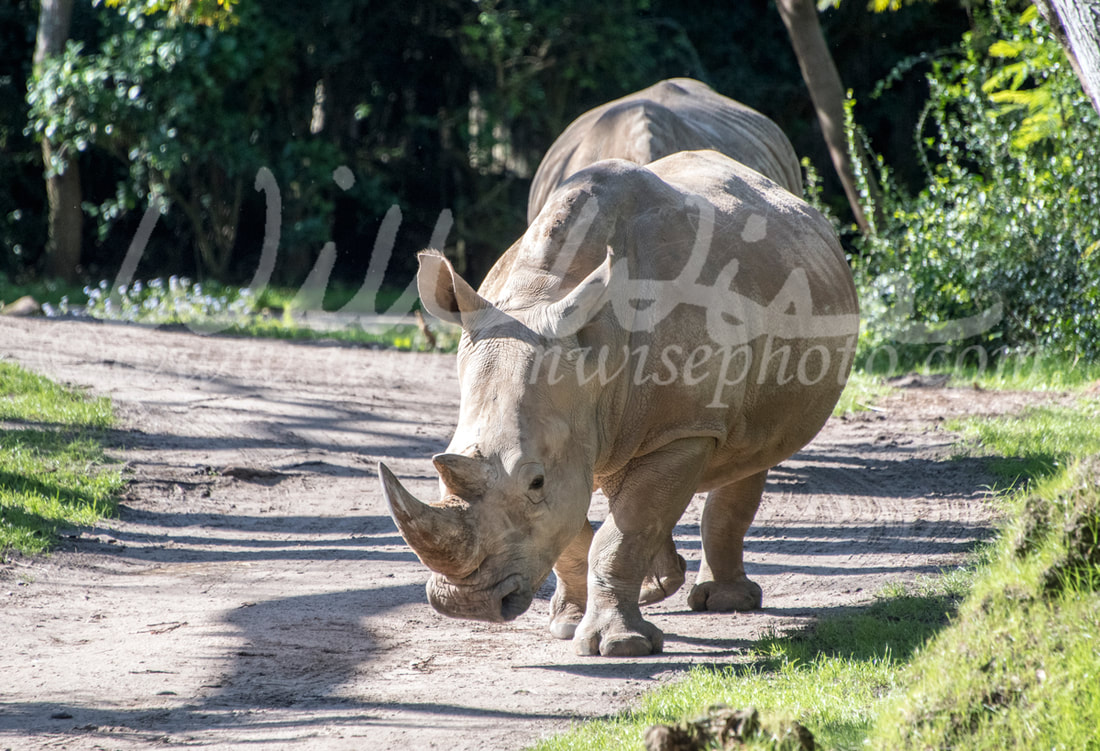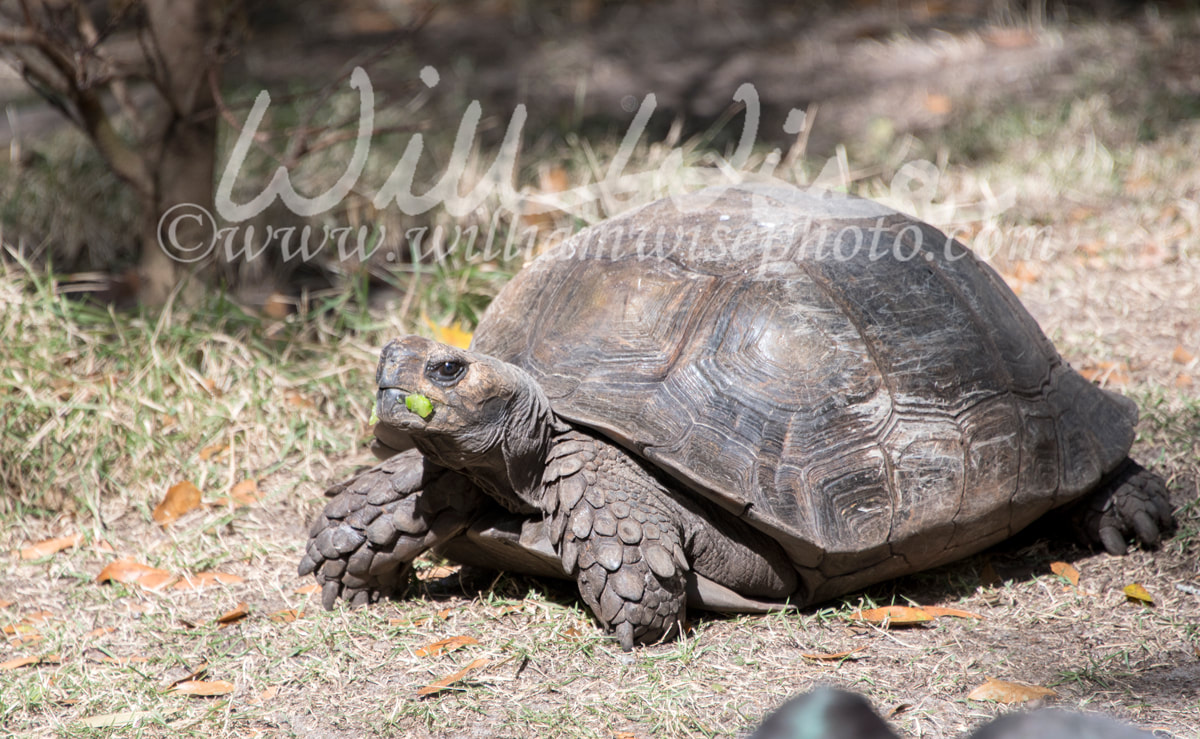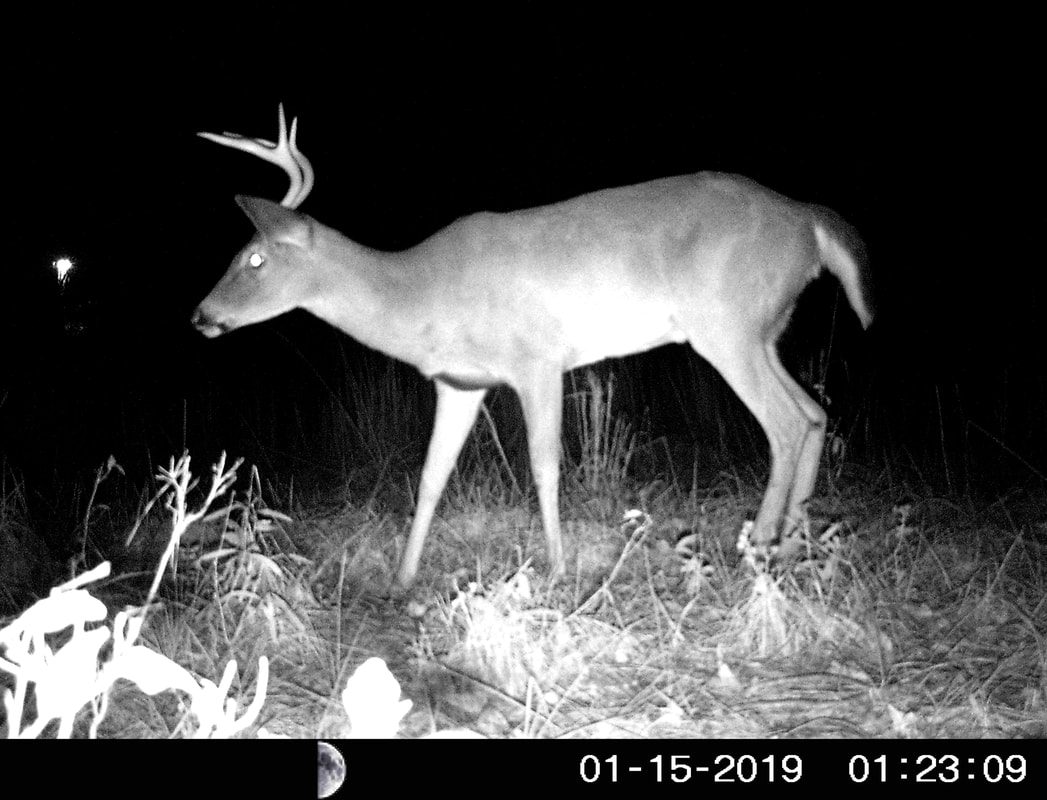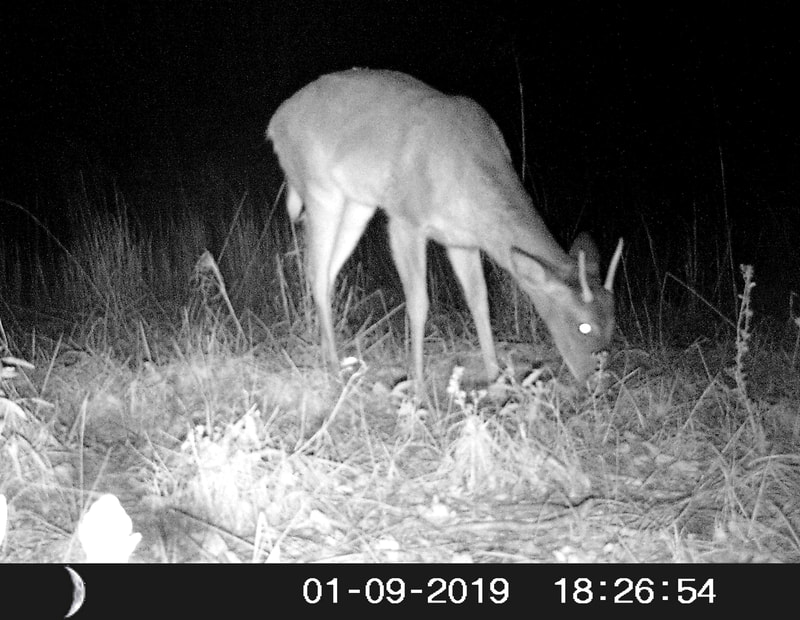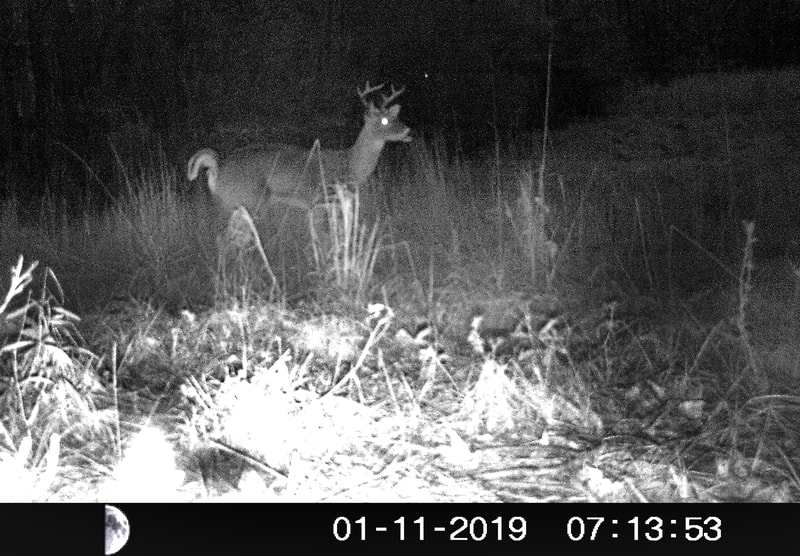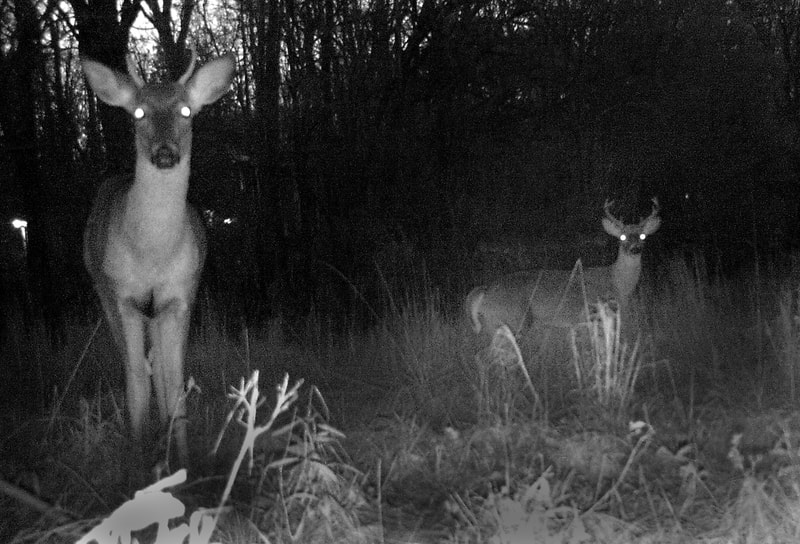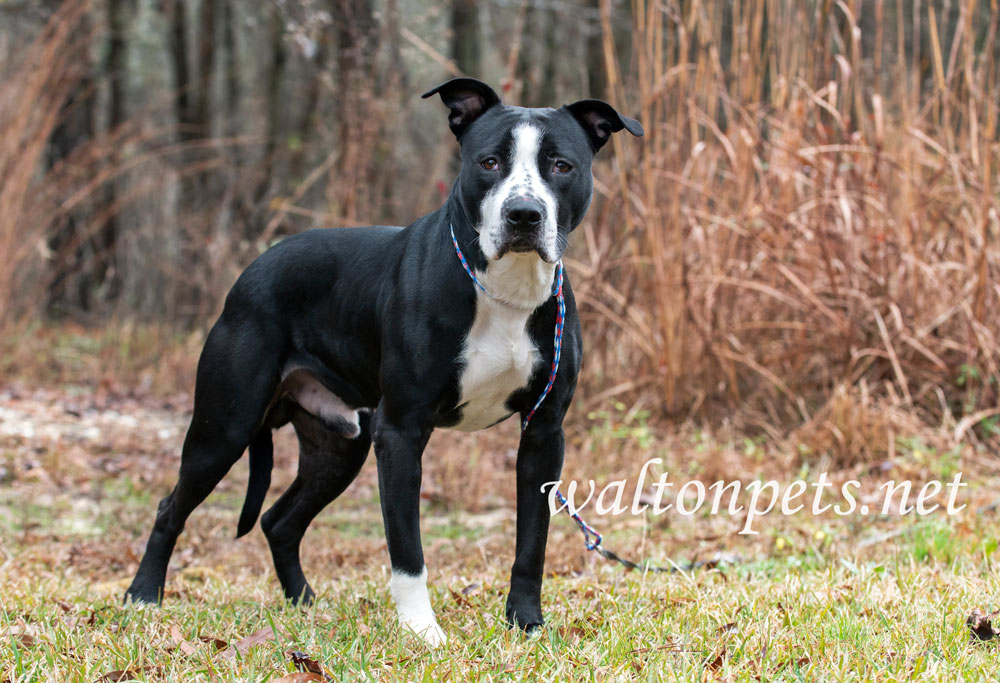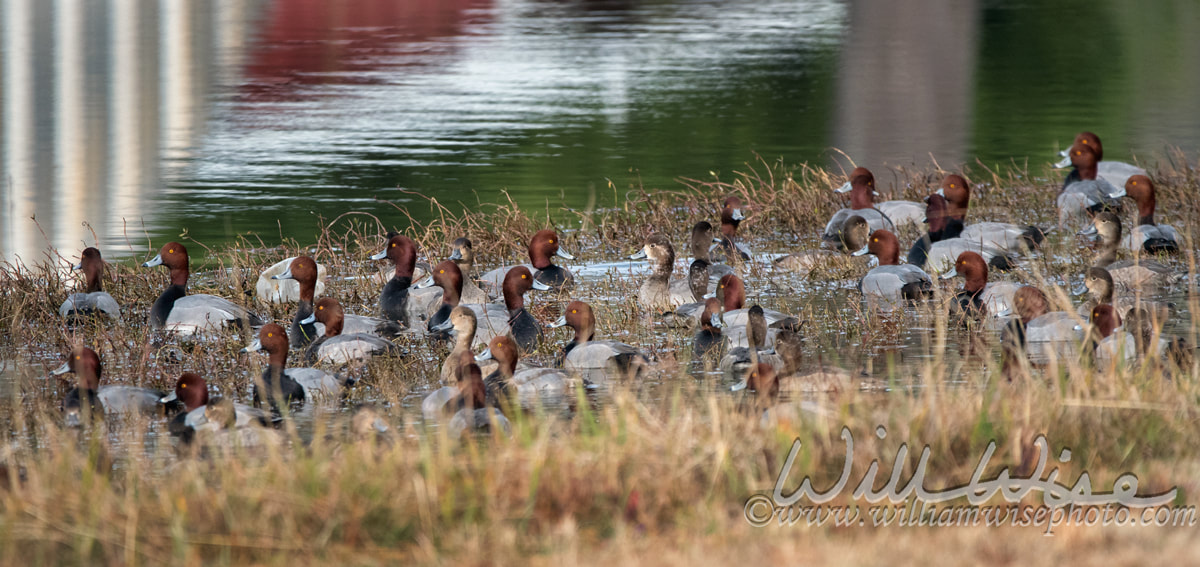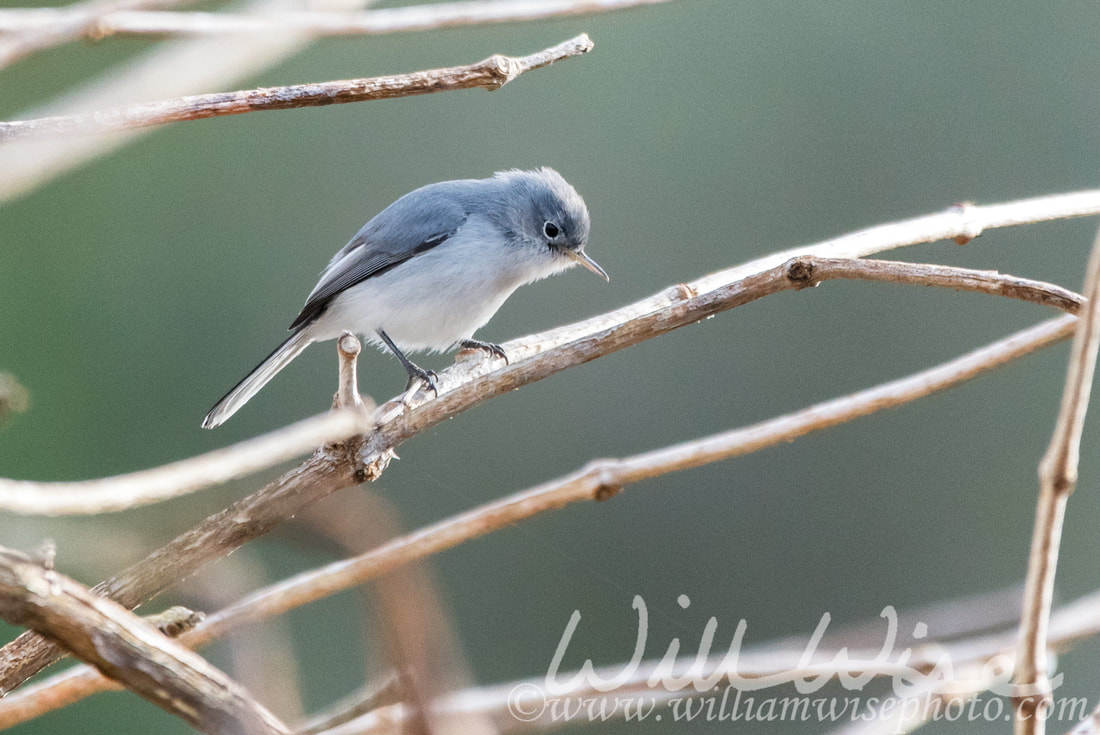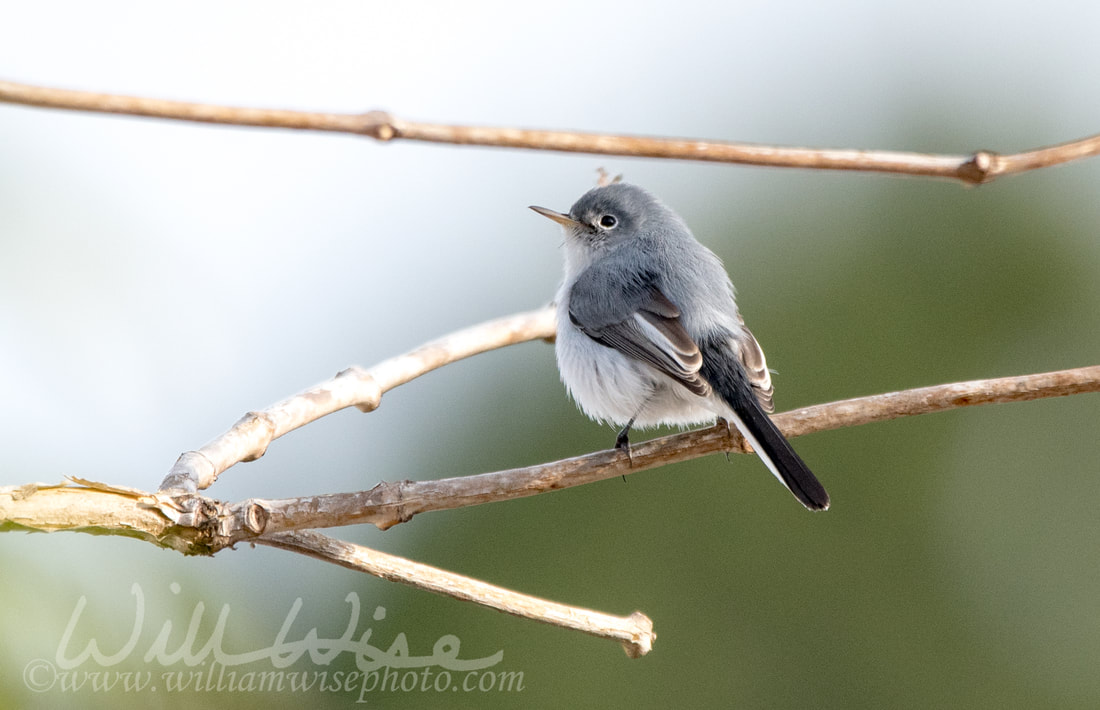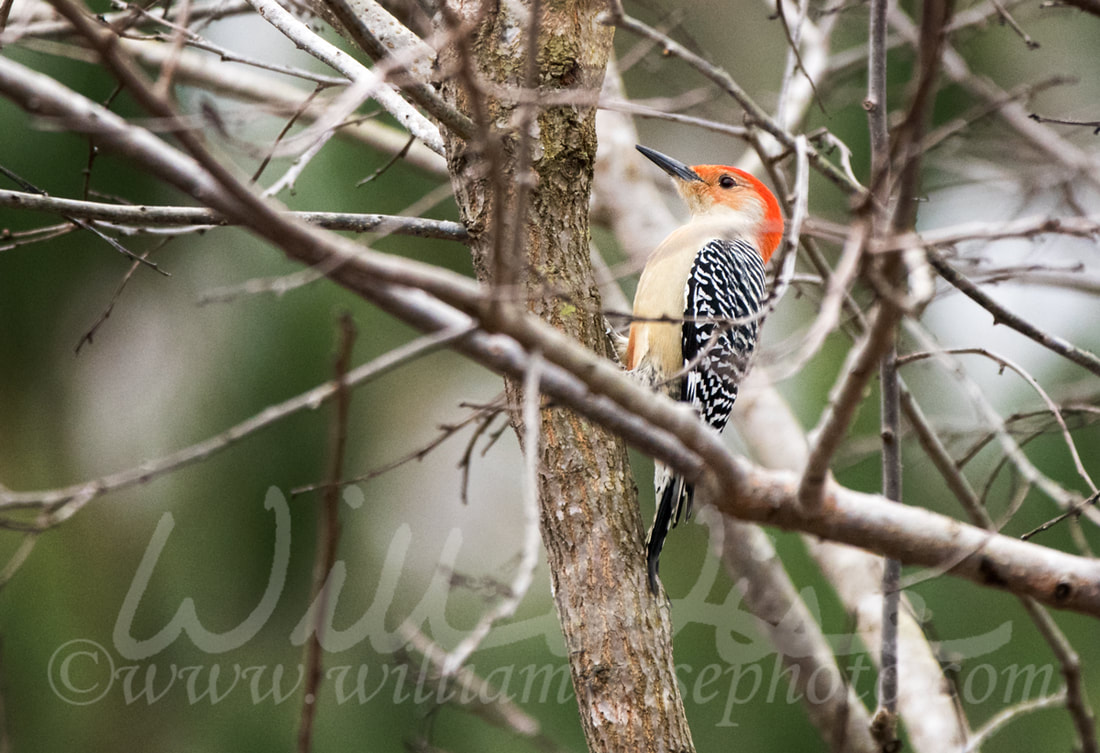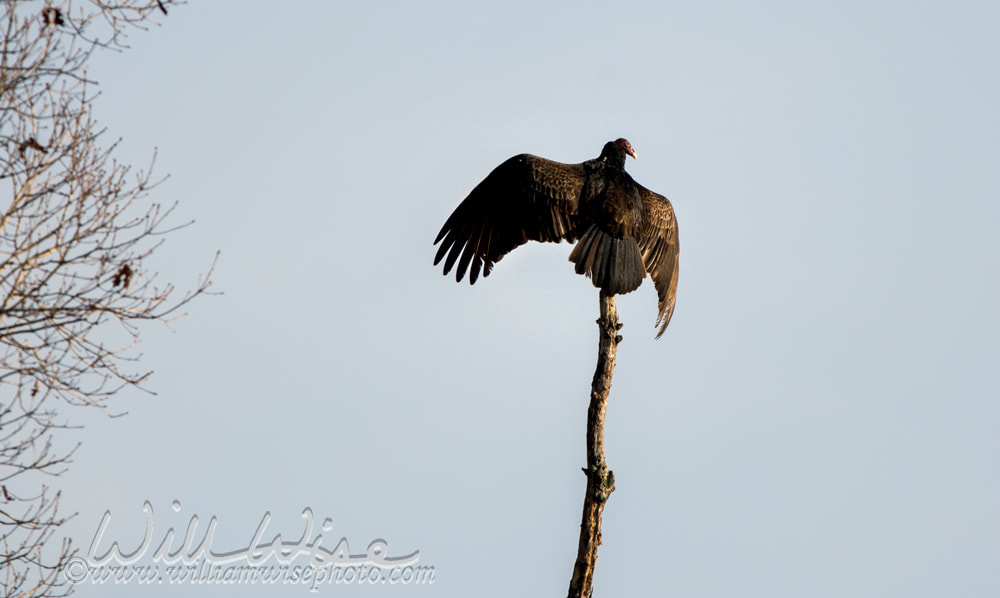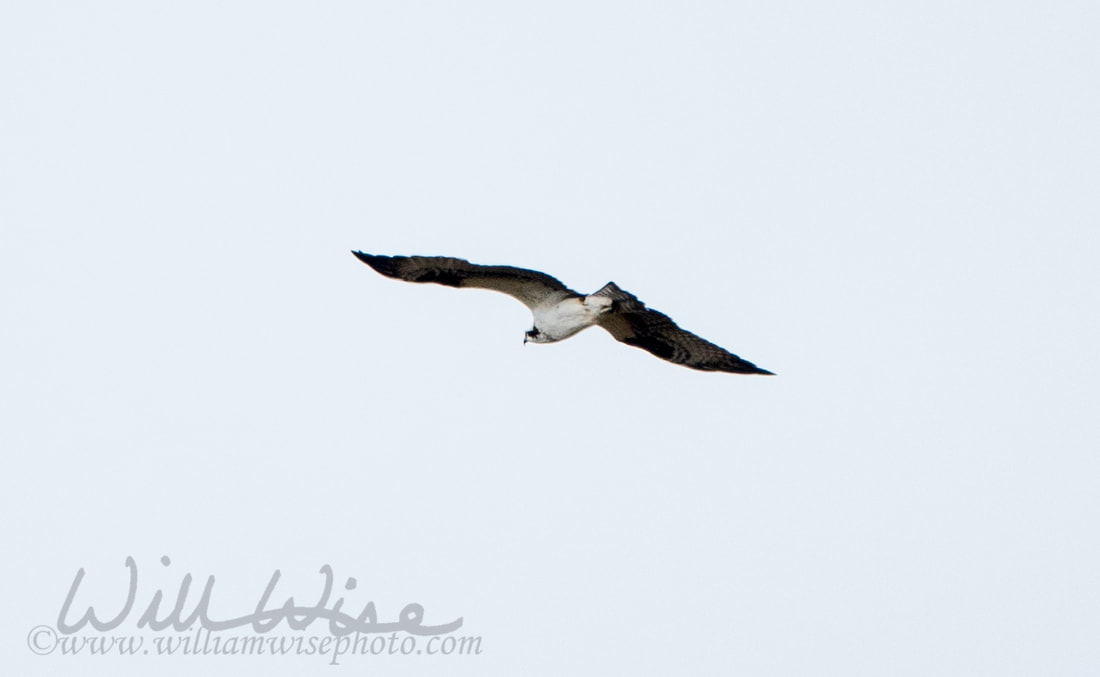|
Monday, 9:30 AM - “Luke” and his shepherd mix sister “Leia” were both dumped out on a nice lakefront property in Walton County, Georgia on January 25, 2019. Although just 7-months-old, Luke was already a big boy! He wasn't too well socialized and didn’t know the first thing about walking on a leash. That always can make a photo session difficult.
I got “Luke” outside and like an uncooperative kid at a portrait session, he just froze; not wanting to relax or strike a pose. You an even see a bit of a nervous look in his eye. But I did the best I could. I decided to not prolong his misery and returned him to his kennel next to his sister. Almost immediately after posting the only two decent photos from his session, Atlanta Lab Rescue emailed and said they were interested. I decided not to put Luke’s sister (and myself) through a photo session. Both Luke and Leia were rescued by Atlanta Lab Rescue on January 29, 2019. Their rescue ride was sponsored by pledged donations to ALR from Ellen, Gael, Jason and Anne.
0 Comments
Monday, 9:26 AM - When photographing in an open-intake shelter that has to euthanize unwanted dogs, it is best to not become attached. But that is quite hard to do, especially with dogs like “JoJo”. JoJo was a quiet Coonhound mix that was picked up by a Walton County Animal Control officer on January 16, 2019. Even though she had a decorative collar, no owner ever came forward to claim her. It was a slow week of rescues and adoptions and JoJo just wasn’t getting noticed. Her intake photo wasn’t too bad, but she sat and sat. I finally had to push all else aside and get her some better outdoor photos. JoJo was always happy to go out for morning walks and was a complaint model for her photo shoot. It was almost as if she knew I was taking her portraits by the way she sat there so patiently posed until I was done. Luckily it worked! After posting her new outdoor photos on January 28, she was picked up by Safe Haven Furever rescue transport! It took JoJo a little bit longer to get rescue, but it finally came! Her rescue was sponsored by pledged donations from Kay, Jason, Eileen and Anne.  Creation Speaks is a Biblical teaching ministry that uses nature writing and photography to glorify our Creator and teach the truth of creation. “But ask the animals, and they will teach you, or the birds in the sky, and they will tell you; or speak to the earth, and it will teach you, or let the fish in the sea inform you. Which of all these does not know that the hand of the Lord has done this?" Job 12:7-9 GOD'S CREATION KNOCKS UPON OUR HEARTSRevelation 3:20 "Behold, I stand at the door, and knock: if any man hear my voice, and open the door, I will come in to him..." On a cloudy Sunday afternoon between church services, I was able to enjoy birding next to my backyard fire pit. Along with a cup of coffee, it was a nice afternoon of journaling and photography. After several hours of the usual birds, I was delighted by the soft appearance of a dainty Hermit Thrush scraping in the leaf litter not far from my chair. As soon as that thrush appeared, there was something in my heart that lifted; a subtle spark of joy or excitement. Where does this spark come from? If we are just the products of random chance and evolution, and the other organisms on this planet are just rivals in this game called “survival of the fittest”, shouldn’t I just have stomped on him as an inferior competitor in the food chain? There must be something more to it.
How does all this explain that spark? Well, in Revelation 4:11, John tells us that all things were created by Jesus Christ and for His "pleasure they are and were created". God finds pleasure in His creation! And being made in His image, God has placed within us a similar pleasure that we find in creation. Hence the subtle leap of joy upon seeing even a simple Hermit Thrush!
Saturday, 1:15 PM - When leaving for door-to-door outreach, I had "that feeling" that I should bring my camera just in case... but I didn't. And sure enough, as I sat at the entrance of a townhome complex on Epps Bridge Road for 30 minutes waiting for friends from church to finish talking with a woman, I spotted a life bird.
A Baltimore Oriole sat right in front of my eyes four about a minute. I had no doubt of the identification seeing that bright orange and black beauty. It certainly wasn't a Towhee. Being a bird I hadn't photographed before, I'm ticked that all I had was my crappy camera phone. I shouldn't have ignored "that feeling".  William Wise Photo Nature Notes is a wildlife, birding and nature photography blog documenting the wonders of God’s creation. “But ask the animals, and they will teach you, or the birds in the sky, and they will tell you; or speak to the earth, and it will teach you, or let the fish in the sea inform you. Which of all these does not know that the hand of the Lord has done this?" Job 12:7-9 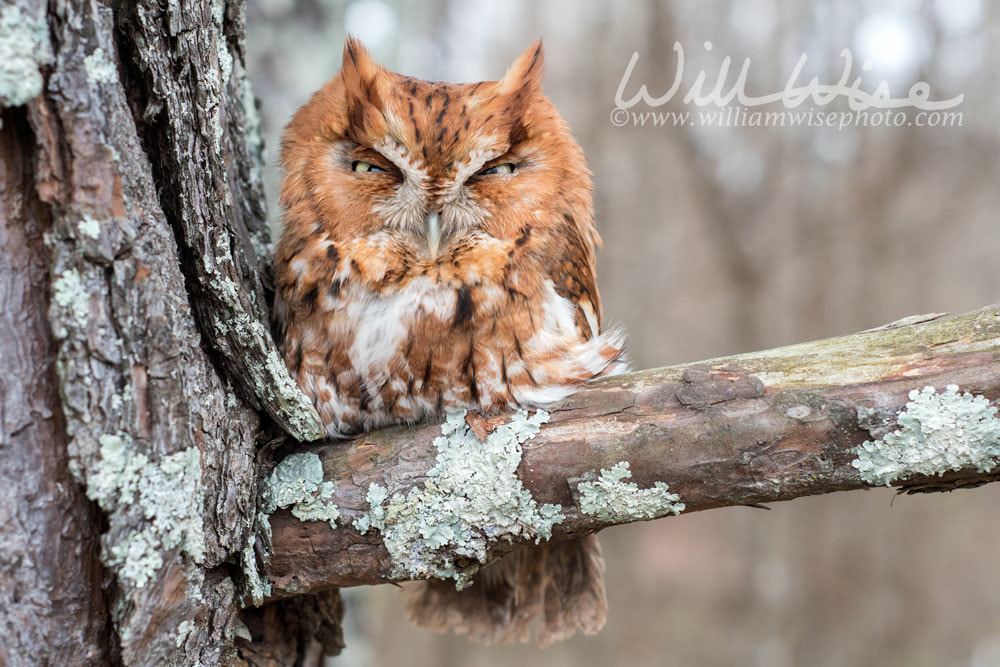 Eastern Screech Owl, red or rufous morph, perched on a tree. Was struck by a vehicle and stunned, photographed before releasing to a wildlife rehabilitator. Walton County, GA, USA. The eastern screech owl, Megascops asio, is a small owl that is relatively common in Eastern North America, from Mexico to Canada. Just after sunset on a Tuesday night, a Walton County Animal Control officer was called out to pick up an owl on Walker Drive in Monroe, Georgia. A little red or rufous morph Eastern Screech Owl had crossed paths with a vehicle and became stuck in the car’s grill after a head-on collision. Owls have superb vision and pinpoint hearing in order to pick off prey in low-light situations. Unfortunately, they can become so focused on their quarry, which in this case was on the side of a roadway, that they don’t even notice the vehicle racing at them from the side. The officer brought the Owl back to the shelter and placed him in a quiet cage. Thankfully, he was still alive in the morning when I arrived. He was still able to see, which is a good sign. Many owls I have picked up that were involved in car strikes have gone blind from head trauma. He was also able to fly a short distance but soon became exhausted. Sensing he wasn’t able to be released, I made arrangements with a licensed wildlife rehabilitor and got his photographs before transporting him into their care. Walton County, Georgia, USA 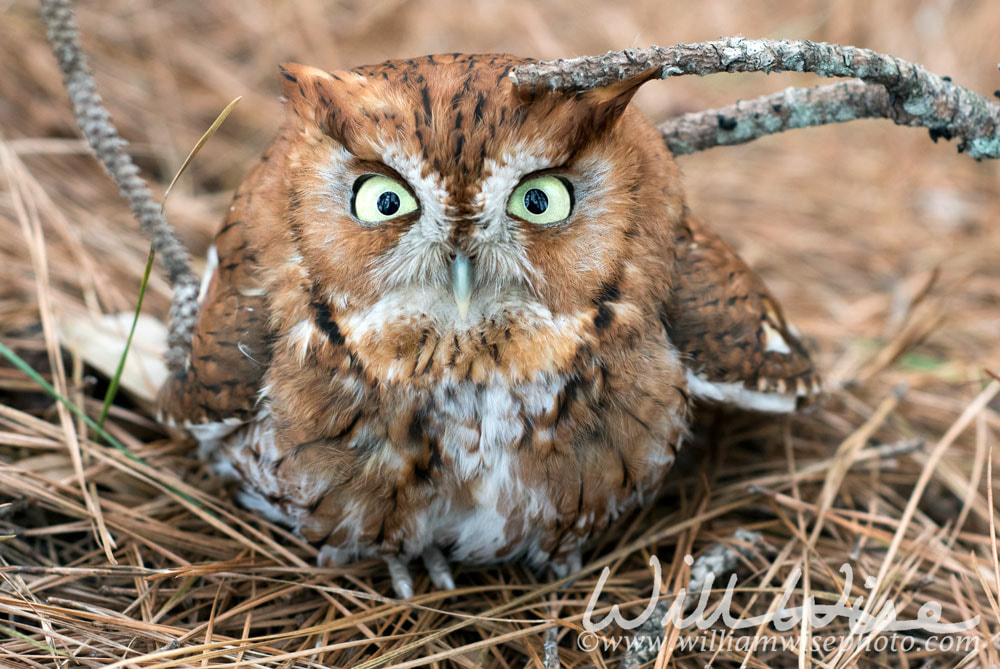 Eastern Screech Owl, red or rufous morph, perched on a tree. Was struck by a vehicle and stunned, photographed before releasing to a wildlife rehabilitator. Walton County, GA, USA. The eastern screech owl, Megascops asio, is a small owl that is relatively common in Eastern North America, from Mexico to Canada. 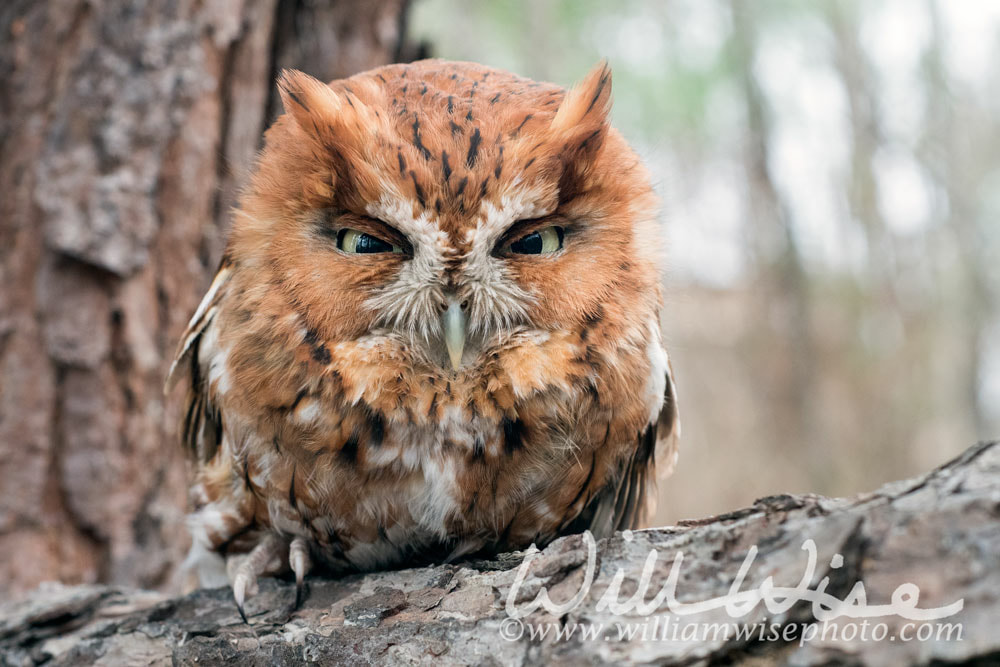 Eastern Screech Owl, red or rufous morph, perched on a tree. Was struck by a vehicle and stunned, photographed before releasing to a wildlife rehabilitator. Walton County, GA, USA. The eastern screech owl, Megascops asio, is a small owl that is relatively common in Eastern North America, from Mexico to Canada. 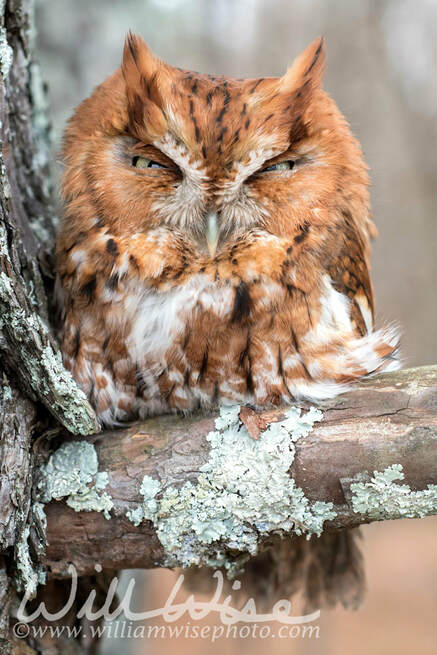 Vertical composition. Eastern Screech Owl, red or rufous morph, perched on a tree. Was struck by a vehicle and stunned, photographed before releasing to a wildlife rehabilitator. Walton County, GA, USA. The eastern screech owl, Megascops asio, is a small owl that is relatively common in Eastern North America, from Mexico to Canada.  William Wise Photo Nature Notes is a wildlife, birding and nature photography blog documenting the wonders of God’s creation. “But ask the animals, and they will teach you, or the birds in the sky, and they will tell you; or speak to the earth, and it will teach you, or let the fish in the sea inform you. Which of all these does not know that the hand of the Lord has done this?" Job 12:7-9 Wednesday, 9:09 AM - And overcast morning with a slight breeze makes it a bit chilly for exposed fingers and my nose. Finally able to get a short break for a bird walk. The grass has been mowed around the upper pond. There’s a lot of bird activity. A great time to go shooting! Bird photography tips abound. There is everything from concise web pages to multi-volume books on the subject. The tips range from knowing your species to knowing your equipment; tips on shutter speed, aperture and ISO; tips from backlighting to flash; tips on manual settings to program modes; and tips on anticipating a birds actions. But the best tip I’ve ever read and have put into practice is: GET OUT AND SHOOT EVERY DAY! I made 2018 my “birding year.” I got outside nearly every day and shot hundreds upon hundreds of birds. Many of those shots weren’t that great, but every once in a while, you snag a gem. Every once in a while that little bird allows you to approach close enough that extreme cropping isn’t needed. Every once in a while you’re on top of your game and get that flying bird in focus. Every once in a while you come upon that rare migrating warbler. But even if you are deleting hundreds of photos, you are gaining a great amount of practice and experience. 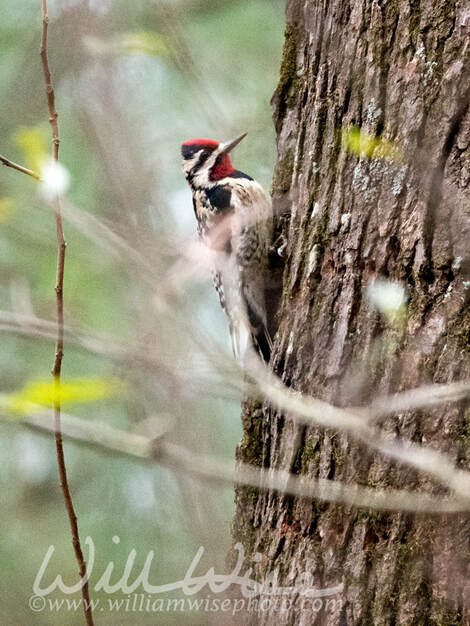 Yellow-bellied Sapsucker; Walton County, Georgia. The yellow-bellied sapsucker (Sphyrapicus varius) is a medium-sized woodpecker that breeds in Canada and the north-northeastern United States. The Yellow-bellied Sapsucker is the only woodpecker in eastern North America that is completely migratory. Although a few individuals remain throughout much of the winter in the southern part of the breeding range, most head farther south, going as far south as Panama. Females tend to migrate farther south than do males.  William Wise Photo Nature Notes is a wildlife, birding and nature photography blog documenting the wonders of God’s creation. “But ask the animals, and they will teach you, or the birds in the sky, and they will tell you; or speak to the earth, and it will teach you, or let the fish in the sea inform you. Which of all these does not know that the hand of the Lord has done this?" Job 12:7-9 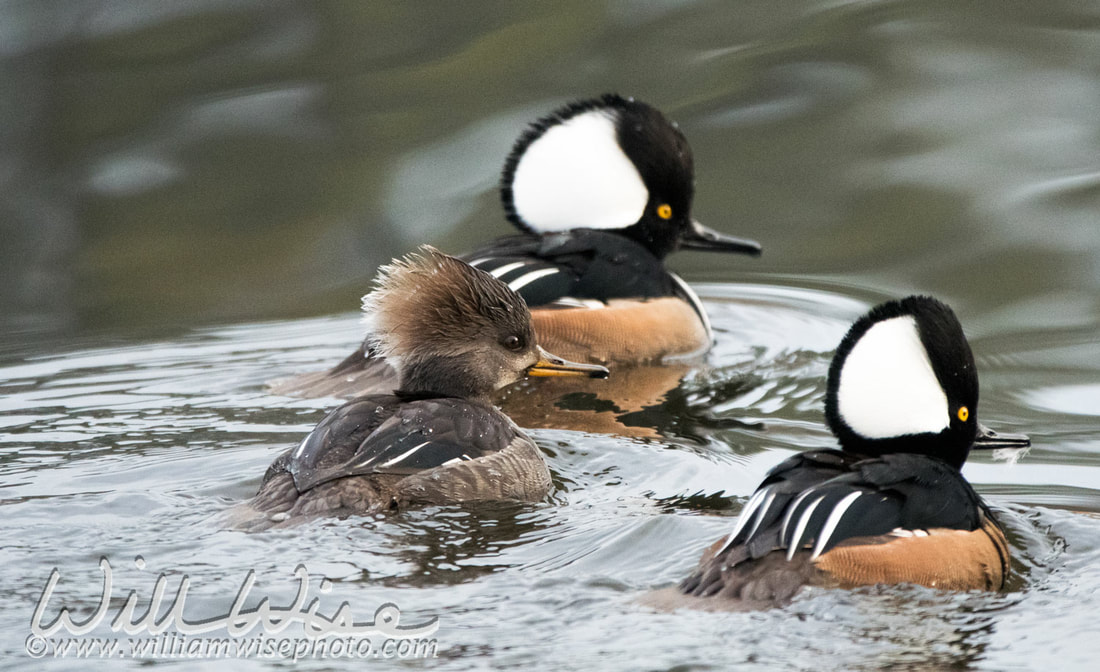 Two male Hooded Merganser ducks in a pond in December. Walton County, Monroe, GA, USA. The hooded merganser Lophodytes cucullatus is a species of small duck. Hooded mergansers are short-distance migrants, and they winter in the United States in regions where winter temperatures allow for ice-free conditions on ponds, lakes and rivers. Thursday, 8:15 AM - During my lunch break, I had a brief moment to wander up to the main retention pond behind my office in Walton County, Georgia. A trio of Hooded Mergansers were diving in the northeast corner of the pond. The Hooded Merganser, Lophodytes cucullatus, is a small duck species found in North America. Since they typically winter on ice-free ponds, lakes and rivers, they love the mild winters of Georgia and usually show up here in the fall and winter. Beginning in November, I can expect a few to take up residence on the nearby retention pond. The “Hoodies” are always quite skittish and rapidly swim away or take to the air as soon as they notice my approach. So this morning I stealthily snuck around the pond, hiding myself below the high bank. I took up a nook in some bushes and waited until they came to me. Just then, a public works truck passed the far end of the pond, pushing the nervous mergansers my direction! I was able to grab a few photographs as they swam by. But sure enough, they were quick to hear my shutter clicks and spot me. The female was the first to notice. With breeding season not too far away, I suppose the two males were too busy thinking of something else! Showers likely, mainly after 5pm. Mostly cloudy, with a high near 52. South wind around 5 mph becoming west. Chance of precipitation is 60%. 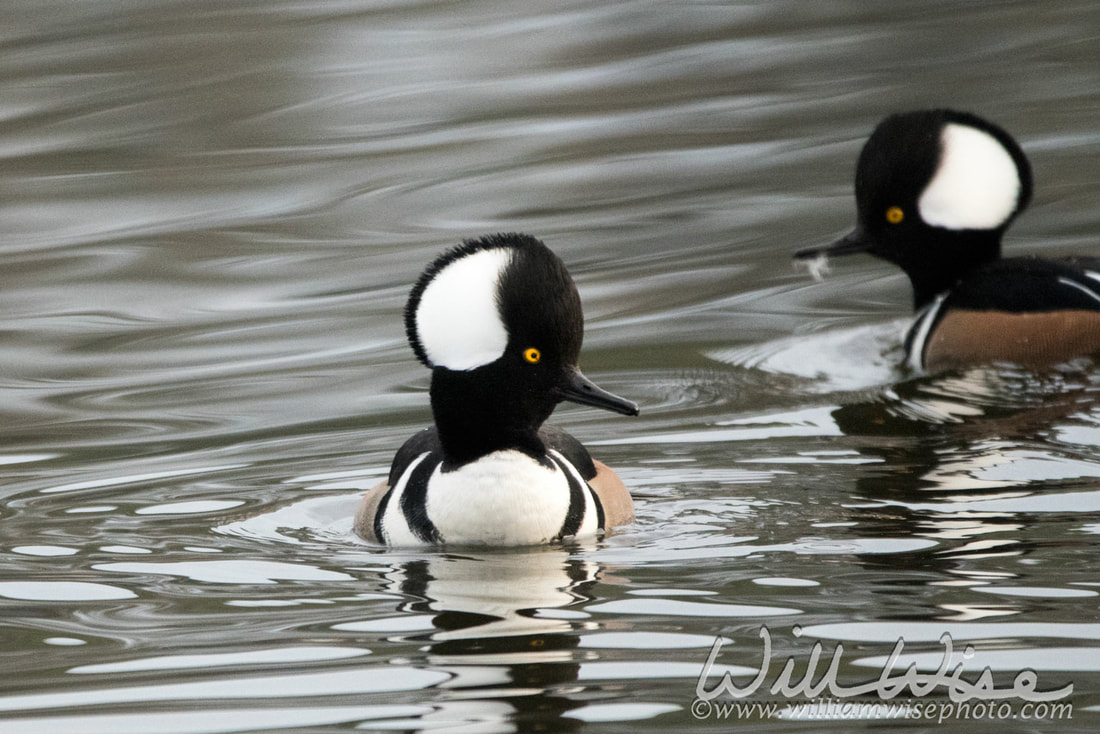 Two male Hooded Merganser ducks in a pond in December. Walton County, Monroe, GA, USA. The hooded merganser Lophodytes cucullatus is a species of small duck. Hooded mergansers are short-distance migrants, and they winter in the United States in regions where winter temperatures allow for ice-free conditions on ponds, lakes and rivers.  William Wise Photo Nature Notes is a wildlife, birding and nature photography blog documenting the wonders of God’s creation. -- Psalms 24:1-2 The earth is the LORD'S, and the fulness thereof; the world, and they that dwell therein. For he hath founded it upon the seas, and established it upon the floods. There’s a popular theme park known as "the happiest place on earth". Why? Because every visitor to a Disney park can’t help but be happy! There is something for everyone: food, fireworks, parades, plays, princesses, lights, roller coasters, costumes, movies, resorts, pools, shopping and more. You’d have to deliberately concentrate your problems to not have fun here! But what about for photographers? Is there something for them? Obviously! What a great place to shoot dazzling displays; to practice dramatic night-time photography; to capture the colors, action and detail; to photo families and fun. Okay, but what about wildlife photographers? Right on again! I actually muscled my 600mm lens around a theme park all day. And for what? Animal Kingdom! Rhinos, lions, wildebeest, ostrich, flamingos, elephants… a Serengeti safari right there in Florida. It is such a happy place for all that even the Rhinoceros was smiling! Seriously? Photos of a theme park safari ride? Hey, why not. The animals themselves are still magnificent. And until the day I can travel to Africa on a real safari... yes, I'll photograph theme park animals! Just for fun I set up my trail camera before leaving for Disney for 6 days. The camera was along the back of my property facing into a meadow.
Axel was impounded by police and animal control on January 2, 2019. He was closed inside an vehicle parked at a fast food restaurant for more than 24-hours when the police took him out of the car. He got his animal rescue photos on January 4 and was picked up by Save A Pet Rescue on January 7, 2019! Jeremiah 8:7 Even the stork that flies across the sky knows the time of her migration, as do the turtledove, the swallow, and the crane. They all return at the proper time each year. Migration is a great thing! I’m not just speaking biologically, but photographically as well! Migration is a great thing for birds and wildlife. When food sources run low because of winter or because of drought, migration allows species to move to another land of plenty until things turn around. But migration is also great for photographers! Each season brings a whole new host of photo subjects right into your area. I can walk out my back office back door and photograph a Great Blue Heron almost any time of the year. But wait until January and a pile of Redhead Ducks magically appears! And oh the wonders of spring and fall migration! Warblers, warblers, warblers everywhere; alive in bright colors of yellow, black and white! Migration is wonderful software programmed within each species by our Creator! Tuesday, 8:50 AM - I’m not one that puts a lot of emphasis on New Year’s Day. However, even though it is really just another new day, I do recognize that many people use it as a date to look at the past and set goals for the future. What about my goals for 2019? Getting into eBird listing in 2018, my goal was to photograph birds like mad… and I did! But how about 2019? I’m still going to shoot like crazy, but do I keep all those lower quality photos, or just the really good ones that qualify for portfolio and stock images? My nature photography goal isn’t the photograph, but the subject. I’m not as interested in producing high quality photographs as I am in just photo journaling all the awesome creatures that I encounter. So perhaps I will keep those hundreds of bird shots? But then again, my hard drive and blogs are filling with hundreds upon hundreds of images. To edit and blog them all can really take some time. It turns a hobby into work and creates a feeling of stress when I fall behind. So how about just keeping the stock quality images or the rare animal finds in 2019? In the end, who cares! I’ll do what I want to do on that day. Why set some “rule” that I’m bound to for the rest of the year just because it is January 1st? I’m just going to keep getting outside, shooting what I want to shoot, posting what I want to post and enjoying God’s creation that He has so generously given us a time to enjoy! Life is short. Get outdoors! |
Categories
All
Archives
September 2025
|
|
All content is ©williamwisephoto.com. Please don't steal images. My images are available at dreamstime.com. Stock sales go into the shelter photography program.
|
In December 1993 I came to know the Designer and Creator of this wonderful planet and its creatures: Jesus Christ.
|
Donations help support the animal shelter adoption photography equipment and adoption website hosting and domain fees. Thanks for your support!
|

